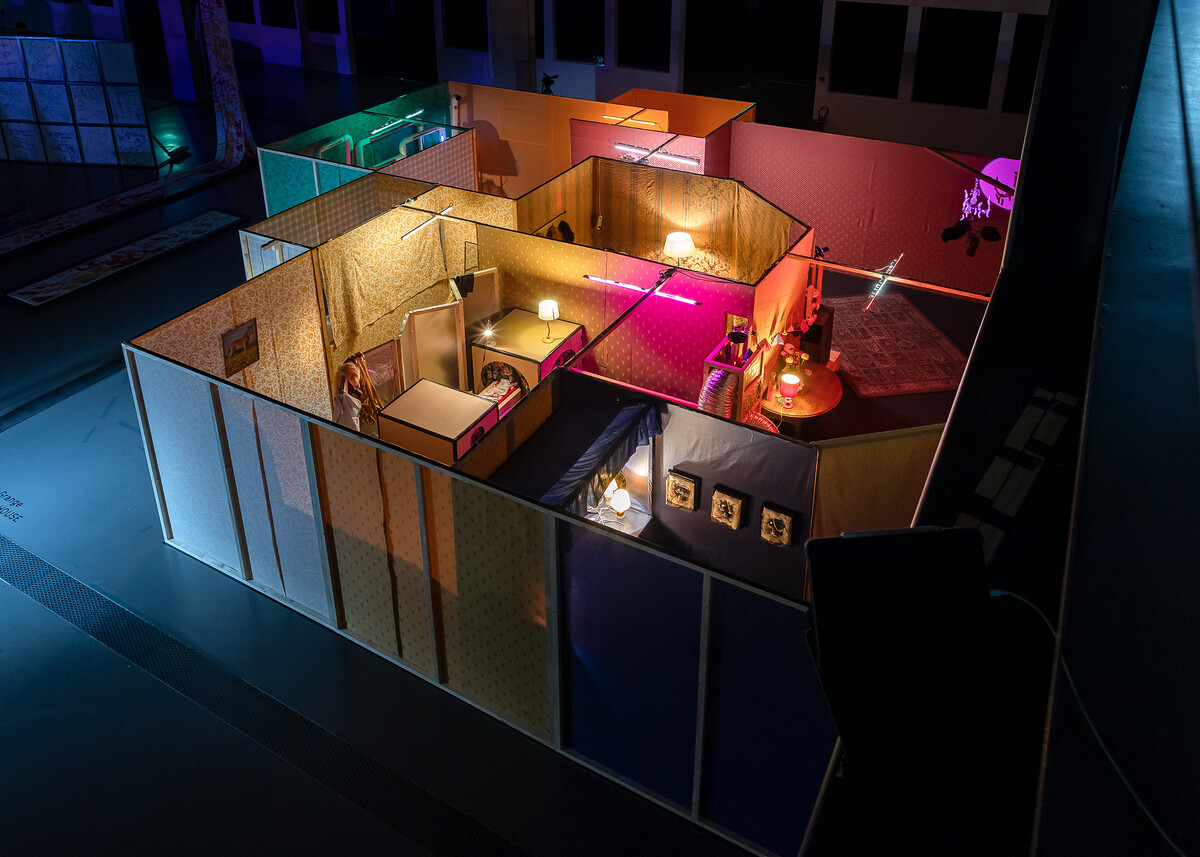Design major
Application deadline: March 25, 2024
A paper meadow preserving botanical memories, DIY film sets performing a live road movie, a teleporting house forming a queer community space, and self-printing maps plotting the intricacies of a landscape.
These are some of the outcomes of Space and Communication, an interdisciplinary MA programme that designs with space as a means for experimental investigations and critical explorations. Students produce ambitious design installations by working with different media including film, objects, performance, sound and video games. The course is structured across multiple studio projects, workshops, and external commissions which traverse a range of design disciplines and contexts. This expanded approach to design, and the diverse methods and processes the course teaches, drives projects that engage with contemporary issues including the social, political, and environmental. By creating original projects and methodologies, students develop distinct forms of practice and produce new design languages.
Space and Communication is dedicated to nurturing personal approaches and perspectives for interacting with the world through design. The course promotes social exchange, collaboration and interactivity as the basis for practice-led research. In doing so, it successfully prepares its graduates for futures working in design and media, scenography, exhibitions, design installations, and public or retail environments. Alumni work around the world for commercial companies, institutions and in education, as well as setting up their own design collectives such as Trojans Collective, Studio Tech and Studio PfliegerFoegle or dedicate to their individual practice in design and art.
Space and Communication is a full-time two-year MA, which takes the form of a small cohort of students working in our designated studio spaces. The course is studio practice-based, encompassing workshops, theory, projects, seminars, external projects with partner institutions, and field trips run by world-renowned designers, architects, filmmakers, curators, and artists.
The course’s dynamic and eclectic structure is complemented by an emphasis on autonomous research and development, during which you will be supported by programme tutors to form your own approach towards design.
In the first year, you will receive formal training in core design methods, tools, and processes, as well as defining key themes that will become the basis of your personal practices. State-of-the-art workshops offer training in metal, wood, plastics, ceramics and 3D printing, while studios and editing rooms let you explore sound, light, construction, performance and film design.
The second year focuses on personal research projects, culminating in two major works: a theoretical piece presented as a visual/physical thesis, and a practice-based 1:1 scale spatial project that can range across installation, media, performance, or any other form of design. This work is built and presented to the public in The Cube, HEAD’s 1,000sqm exhibition hall.
In addition to personal research, the course is taught through lectures and seminars, as well as two types of workshops: workshops across disciplines and studio practice workshops. The former sees you collaborate with designers from across fashion, visual arts, visual communication, media, cinema, photography and interior architecture, all of whom are students at HEAD or our partner institution ECAL in Lausanne.
Studio practice workshops will see you participate in group projects run by design and art practitioners, in collaboration with partner institutions such as Arts at Cern, Salone del Mobile Milan, Valencia World Design Capital 2022, Ljubljana Biennial of Design 2024, The Natural History Museum in Geneva, The Design Film Festival at The Design Museum London, Le 104 Paris and GIFF Geneva International film festival.
Space and Communication embraces the fluidity of design, equipping you with all the skills you need to freely move between disciplines. You will develop your critical faculties and the kind of unique, personal perspectives necessary for growing your design practice into the future.









